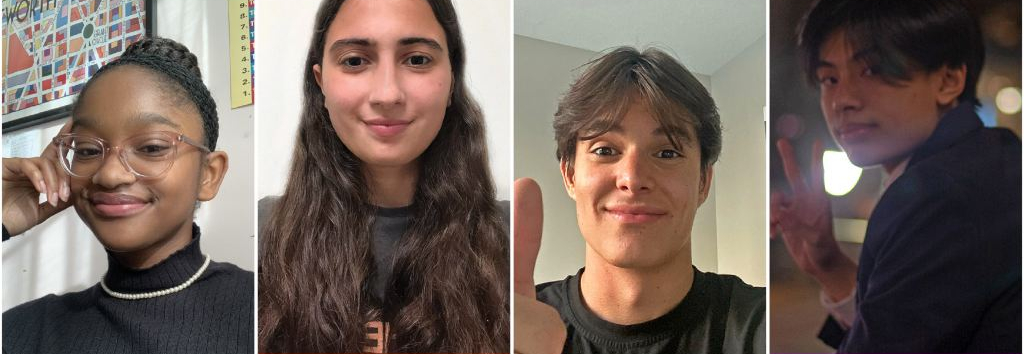By Chris, IvyWise College Admissions Counselor
If you aspire to a top-flight college or university and are seeking financial aid and scholarships, you have probably come across an organization called QuestBridge. Like many others, you may wonder what it is, who it’s for, and how it works. As a former admission dean who directed the QuestBridge admission process at my institution for 20 years, I’m here to help.
What Is QuestBridge?
First, the basics: QuestBridge was founded in 1987 and strives to connect high-achieving, low-income students with 55 partner colleges and universities through a national matching program similar to a medical school process. The partner institutions include large research universities and liberal arts colleges, and many are considered among the best schools in the country.
Partner schools agree to provide financial aid that meets the full cost of attendance with no-loan, four-year scholarships to all students they admit through the QuestBridge National College Match. Many partner schools also accept the QuestBridge application in Early and Regular Decision in lieu of the Common Application, potentially removing a cost barrier for some students.
Who Can Apply to QuestBridge?
Anyone can apply to QuestBridge, but the program’s intent is to provide access to college for low-income students regardless of background. The focus is on family income levels along with academic strength and personal qualities. Students apply by completing the QuestBridge application, which is subsequently used in the college admissions review.
QuestBridge selects a subset of applicants as finalists, and these students are eligible to apply to the National College Match program. Finalists select up to 12 colleges to rank with the understanding that if they are matched with a school, they are committed to attend — much like an Early Decision application. Students can decide not to participate in the match, or they can rank only one school if they so choose.
How QuestBridge National College Match Works
QuestBridge forwards applications to colleges to review holistically for academics and personal qualities, decide which students they are interested in, and return their lists to QuestBridge. Because colleges provide the financial aid to fully fund the students they match with, they also review each student’s financial need to ensure it aligns with their institutional policies.
After the application review, QuestBridge then runs the matching algorithm, starting with each student’s top choice and moving down the list until a match occurs. Let’s say student X ranks five schools, with Stanford as the top choice. Stanford passes, so QuestBridge looks to the next school on the list. UChicago passes, so on to school number three. The third school, Amherst College, says yes, a match is made, and the student is committed to go to Amherst. Simple, huh?
Navigating the QuestBridge Path
The process seems straightforward: You apply, become a finalist, rank some schools, and go to college on a full ride. However, there are several things to consider as you decide whether to go down the QuestBridge path or apply on your own to partner colleges and other institutions.
QuestBridge partner colleges are truly committed to increasing access to education for underrepresented students and recognize that income level, regardless of race or ethnicity, is one of the biggest obstacles students face. Colleges are also invested financially, and it is a common misconception that students are awarded funding by QuestBridge itself. In fact, they are awarded financial aid directly from the individual colleges.
Financial Considerations for Partner Schools
Colleges that participate in QuestBridge must replace the federal funding that is often a part of financial aid with institutional money, so they carefully review each applicant’s financial aid paperwork to ensure they meet institutional parameters for a no-loan award. Different colleges have different thresholds, which directly impacts which students they will consider.
For example, Harvard, one of the wealthiest colleges in the country, recently announced free tuition for families earning less than $200,000 per year — families earning less than $100,000 per year also get free room and board. Other well-endowed QuestBridge partners also have no-loan policies for all families, while still others lack the resources to eliminate loans, and this disparity impacts who they can consider for the match.
It’s important to note that this impacts the matching process only. When colleges are committed to covering the full cost of attendance in the standard admission process, the same student could receive a financial aid package that includes loans and work-study.
How Many Students Do Schools Match With?
Another unknown factor that can impact outcomes is the number of students each school is hoping to match with. This can vary from the single digits to over 100 students in some cases. While this data is shared after the match is complete, students have no idea how many seats are available at a particular school.
The pool is also remarkably deep, attracting well-qualified students from all over the country. This makes the process very competitive, which might result in better odds of admission via Regular Decision than through the QuestBridge Match. Additionally, only about half of finalists who participate end up matching with a partner school — those who don’t must go through a standard admission process and file early and regular round applications.
Is QuestBridge Right for Me?
Given all of this, how should students engage and assess whether QuestBridge is right for them, and how can they approach the process? No two students are alike, and no two journeys are the same, but these suggestions and guidelines will help you decide your own best trajectory.
- Begin your college research as early as possible. The QuestBridge timeline comes even before Early Decision deadlines, so the window for learning about and potentially visiting schools is narrow.
- Be mindful of the QuestBridge application deadline, which is around October 1. Participating in the program requires you to be well organized and ready to submit by this date.
- Search beyond QuestBridge schools. Many non-partner schools offer generous, no-loan financial aid policies.
- Apply to college-funded fly-in programs and see as many campuses as possible. Colleges with programs on the same or overlapping dates will collaborate and share costs so you can see more than one in a single trip.
- Ask each QB school you would consider matching with what their no-loan financial aid policies are to ensure they will consider your application. There is no point in ranking a school if they won’t consider matching with you due to family income level.
- Understand that if you meet a school’s no-loan threshold, you will get the same financial aid package if you are admitted in Early Decision, Early Action, Regular Decision, or through the match.
Colleges are proud of their QuestBridge affiliation and usually publish the number of students in an incoming class who were admitted through the program, giving you an idea of how competitive a school might be. It’s important to distinguish between matched scholars and students who used the QB application in a different admission phase.
Just as you would in a standard application process, you should rank only those schools you would happily go to. QuestBridge is a little like applying to multiple schools Early Decision — you get a thumb on the scale for your commitment to attend at each school you rank.
If you decide to skip the matching process, be intentional about where you apply and demonstrate sincere interest. Colleges will want to know that you are not just throwing applications at the wall to see what sticks. Schools with need-aware policies and limited financial aid budgets want to spend every penny they have but do not want to make offers to students they do not believe will matriculate.
Becoming a QuestBridge Finalist is a real accomplishment and offers a great opportunity to apply to some of the top universities and colleges in the country in a smaller, albeit competitive, applicant pool. Additionally, finalist status can be a kind of pre-endorsement for some colleges because it indicates you will be a competitive candidate at many selective schools that are not QB partners.
Become an IvyWise Scholar
Hundreds of quality colleges and universities believe in access to a great education for underrepresented students and have generous financial aid policies. So, while QuestBridge can be a terrific path to college for many students and provide some advantages along the way, it’s not the only route to attending a great school on a generous need-based scholarship.
Talk with your school counselor to determine which schools, partner and non-partner, you are competitive for. You can apply the reach, target, and likely categories in the match as well as your regular search process. Better yet, apply to our IvyWise Scholars program if you meet the eligibility requirements. We offer pro bono college admissions counseling to qualified students and can help you determine the path to college that’s right for you.
Apply by May 23, 2025




